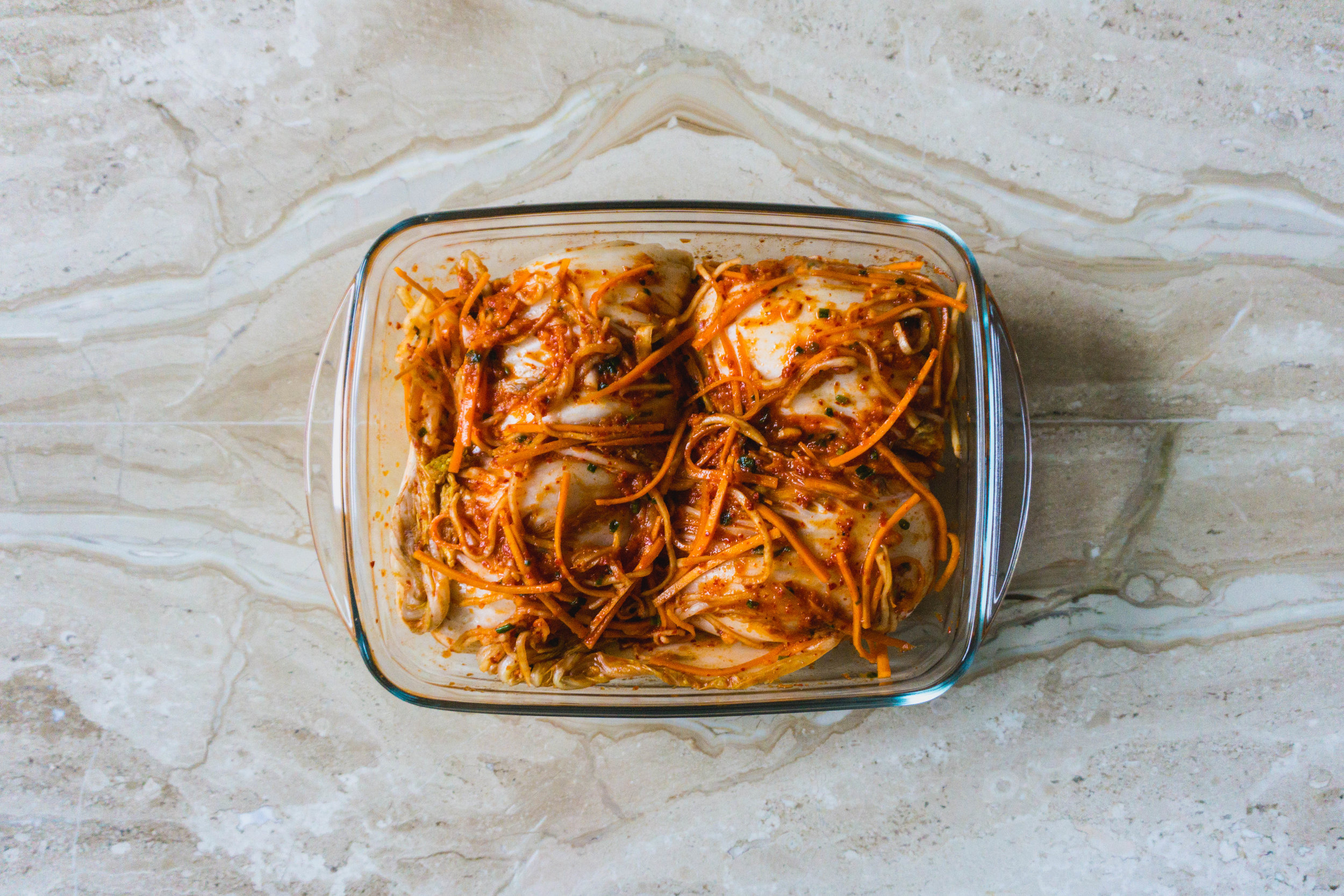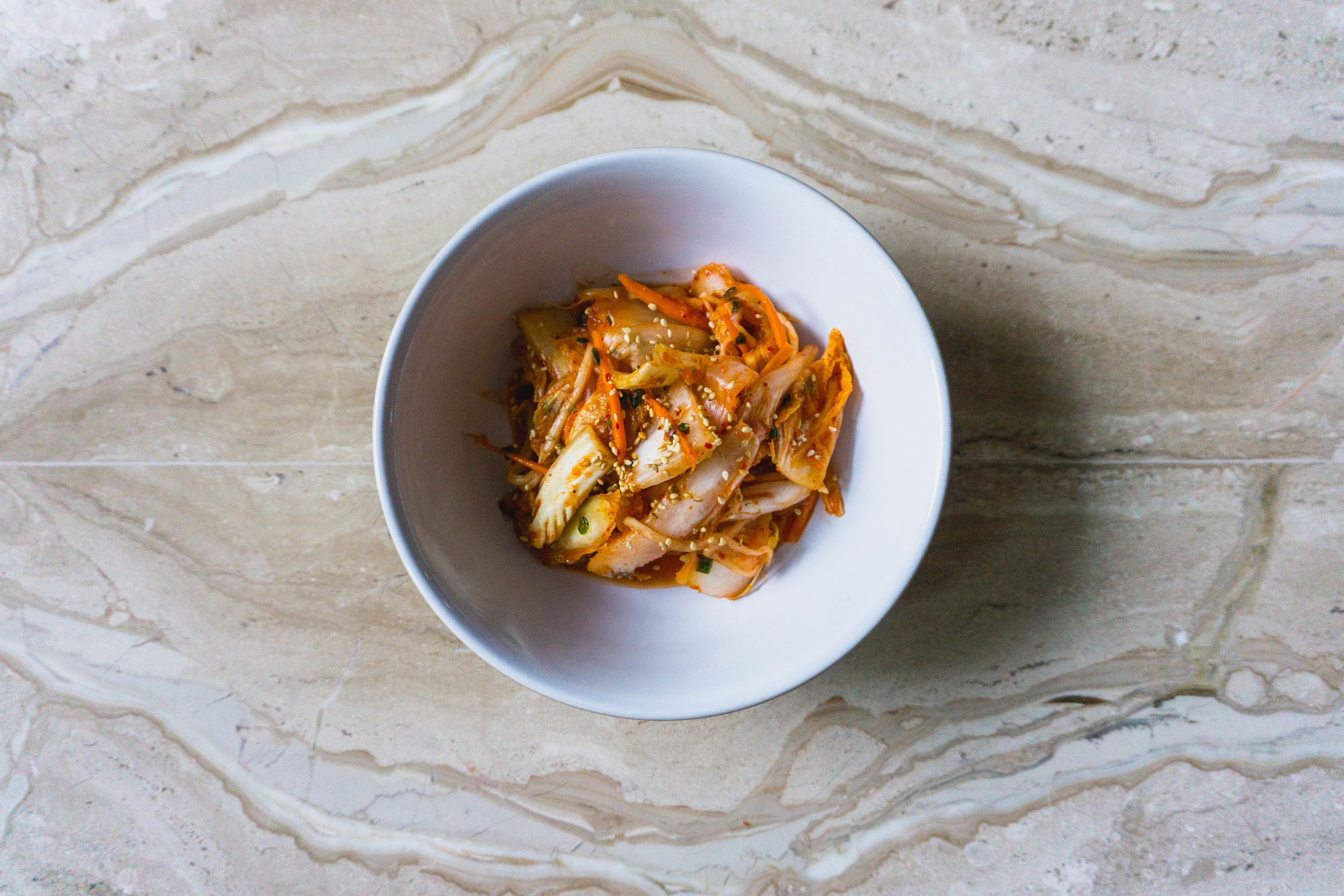Kimchi!
I’m obsessed about pickles and ferments. Again.
In the past month, I’ve been slowly taking over the top shelf of my mom’s fridge with bottles of beetroot-magenta pickling liquid, mason jars stuffed with sweet pickled ginger, and repurposed jam jars of jackfruit and chilli suspended in murky spiced ferments. Much to her annoyance, after using up less than half of each pickle, I often forget about them. So there's currently an eclectic mix of mason jars and glass bottles stacked precariously in the fridge, requiring a reluctant game of pickle-jar jenga every other time we open the fridge door. (Sorry mom!)
Perhaps this obsession with preservation is a phase every food-person go through, or maybe I’m just doing this out of habit from my garde manger days at Blue Hill, when Pris and I sold pickles by the bucket every week. We had pickled rhubarb, ramps, beans, strawberries, knotweed, kabocha squashes, mokum carrots, asparagus, fiddlehead ferns, and a whole assortment of exotic pickles and ferments on our station. Basically anything and everything around the farm that could be would be pickled.
Despite having dealt with them on the daily for the past few months, I don’t think I’ll ever get bored of pickling and fermenting things. It’s one of the most underrated cooking techniques, as it is deceptively simple yet it changes the taste and texture of ingredients in craazy ways. Just think about raw cabbage and kraut, or fresh cucumbers and dill pickles, or raw ginger and those slivers of sweet pickled ginger you get with sushi. Worlds apart eh! I think my mom has caught on to this pickling bug too; She made her own pickled papayas and cabbages and leeks (which tasted great in a fried egg!)
Anyway, last week I was hit by the itch to pickle and preserve yet again, so I made kimchi for the first time! I followed a recipe from Maangchi’s website. She’s this eccentric Korean ahjumma-Youtuber my sister found a few years back. (Go watch her videos, she's actually quite auntie-like-weird-cute, and strangely entrancing). I modified the recipe a teensy bit as I did not have Chinese chives or minari on hand, but the kimchi still tasted super legit. I could’ve left the cabbage to soften for a little longer though, as they are still on the crunchy side after a week of fermentation. (Don’t worry, the recipe below takes this into account.) Also, it’s worth mentioning that kimchi covers a broad range of Korean banchan side-dishes, and this particular one is a traditional Napa cabbage or tongbaechu kimchi (i.e. 통배추김치, thanks Google Translate).
One last thing: speaking of Korean things, I HAVE to mention this Korean drama I recently watched. (I promise you I don’t usually watch Kdramas; this is an exception.) It’s called Signal, and it’s SO. GOOD. It’s a crime drama in which two generations of detectives communicate through a buggy time-travelling radio transmitter, allowing them to solve previously unsolved cold cases, change the past, alter the future, all the while questioning the morality of all that time-paradox jazz. AHH. Too good. TOO GOOD! It’s like Stranger Things and Criminal Minds had a beautifully emotional, time-travelling Korean lovechild.
Anyway, aside aside, recipe and pictures below!
---
Napa Cabbage Kimchi
makes 4 cabbage kimchi parcels (~1kg total). Recipe adapted from Maangchi.
Ingredients:
1 whole napa cabbage
50g salt, more if needed
100ml water
10g glutinous rice flour
10g brown/caster sugar
2 tbsp fish sauce
1 tbsp fermented salted shrimp, optional (called saeujeot in Korea, cincalok in South East Asia)
40-80g hot pepper flakes, depending on desired spiciness
1 carrot, julienned/cut into matchsticks
½ daikon radish, julienned/cut into matchsticks
2 spring onions, chopped
8 cloves of garlic, minced (blend it together with the ginger and onion to save much chopping time)
5g ginger, minced
½ a white onion, minced
Method:
- Salt the cabbage: Split the cabbage into quarters, carefully so as not to let individual leaves separate (there’s a tip to do this easily in the notes section). Wash the cabbage quarters with water, and salt the cabbage leaves, sprinkling salt between each layer. Place cabbage quarters in a deep bowl, and let them salt for 3 hours or overnight, flipping them every hour or so to get them evenly salted.
- Make slurry: While the cabbages are salting, add the water, glutinous rice flour and sugar into a small pot and simmer for about 5 minutes, stirring often. Leave the slurry to cool. Strain the liquid if there are any large clumps of flour left.
- Mix errthang together: To the slurry, add the garlic, ginger, onion, fish sauce, fermented salted shrimp, and pepper flakes. Mix well until it becomes pasty. Then, add the radish, carrot and green onion and mix until the veggies are coat in the paste. At this point you can add a touch of water if the mixture becomes too stiff to combine.
- Wash lettuce: After the cabbage quarters have salted (they should be limp and foldable), wash and rinse them with water. Make sure the cabbages are relatively dry, pouring away any excess water from the bottom of your rinsing bowl.
- Make kimchi: (If you don’t want your hands feeling all numb from the chilli, you might want to wear gloves for this step!) Spread the kimchi paste onto each cabbage quarter, make sure to lift each leaf individually to get the paste in between each layer. Fold the cabbage quarters in half lengthwise.
- Eat, or store: The kimchi can be eaten immediately (which is called a geotjeori (fresh kimchi)). Or to get that distinct funky kimchi flavour, leave the kimchi to ferment at room temperature for one to two days, then refrigerate (I’m inclined to say indefinitely..? But don’t blame me if it starts to look dodgy after 2 years :P)
Notes:
The best way to do this without too much leafy wastage is to cut a short slit at the base of the cabbage, then gently pull the halves apart, then cut another slit at the base of each half, and pull them into quarters.






